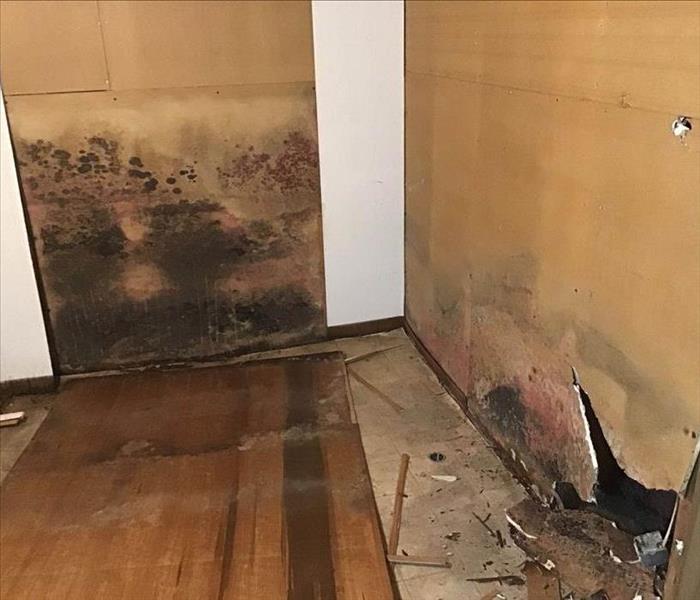The Fundamentals of Black Mold
9/13/2021 (Permalink)
Black mold, a potential threat to your home’s structure, can be visible or out of sight. Stachybotrys chartarum, as it is also known, can be remedied if you know what to look for and where to look. By understanding the fundamentals of this mold, you can protect your Oklahoma City home from damage.
Where Mold Grows
Mold needs a location that provides it with ample food and moisture. Wood, paper, cardboard, and drywall are materials where it thrives, but it can make its home anywhere with its desired conditions. There are several typical household locations for mold:
• Bathrooms
• Sinks
• Kitchens
• Basements
• Crawl spaces
As you can tell, it is most likely to be found in damp and warm places. During times of high humidity or after flooding, it’s worthwhile to look for any growth in these high-risk locations.
Identifying the Mold
Despite its name, black mold maybe a dark green color early in its life. Immature mold also is so small that it looks like some dirt on a wall or floor. If left to mature, it turns into the distinguishing black color.
While the fungus may be noticeable around the home, it could also be hidden away inside of walls. Stachybotrys chartarum often gives off a musty smell that can be used as an alert that it is somewhere in the room. This unseen mold threatens your home’s framework while it deteriorates drywall, so it should not be ignored because it’s out of sight.
Stopping the Mold
If you locate or suspect a fungus, mold cleanup services can fully treat the problem. Mold can be indicative of a water problem that needs the professional tools of a water and mold damage specialist. Mold remediation stops further growth by denying its sources of life.
Black mold spreads really quickly in ideal conditions. By treating it early enough, your home is protected from a localized problem becoming a household nuisance. Understanding the fundamentals of this mold and others, you know when you need to act.





 24/7 Emergency Service
24/7 Emergency Service
